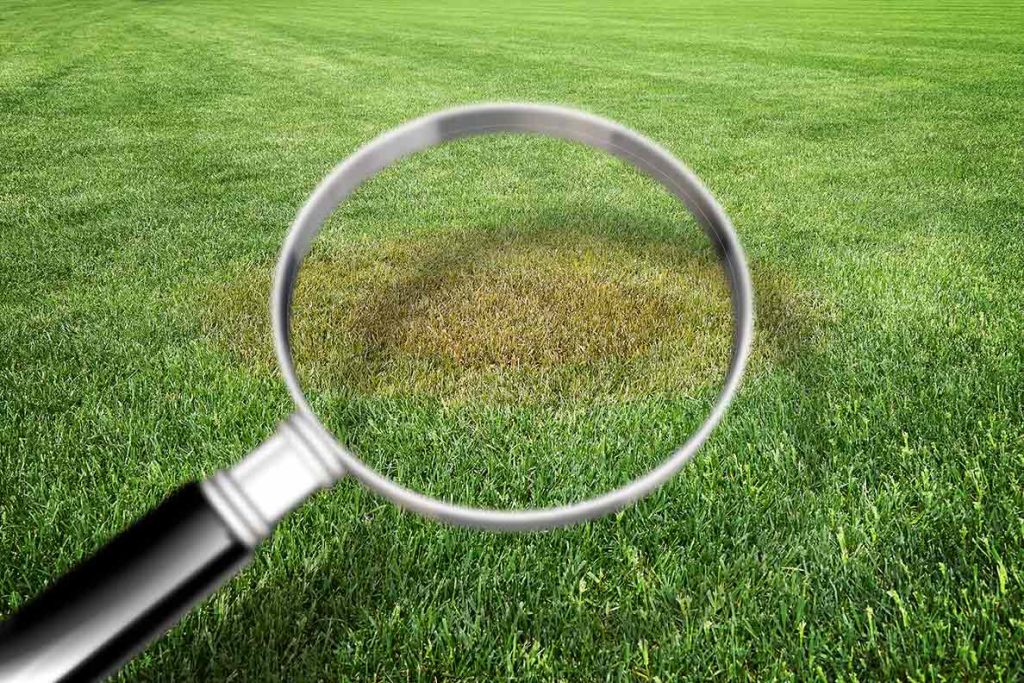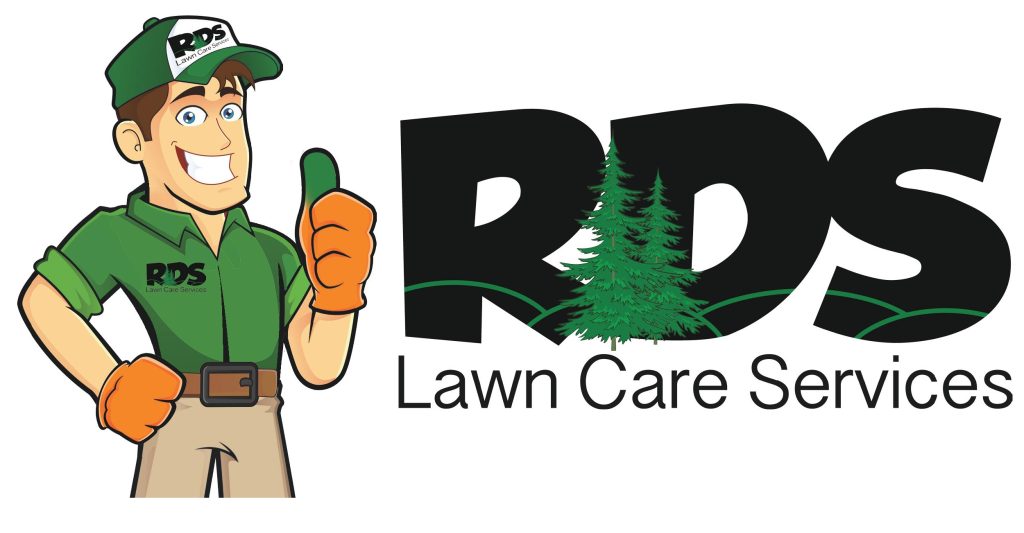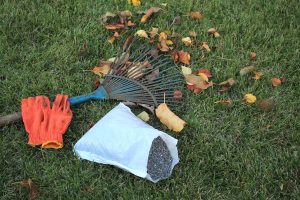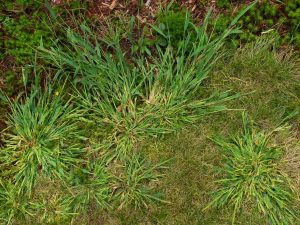
Large Patch is a very common lawn disease that affects warm-season turfgrass. This disease is caused by the exact same fungus that is responsible for the well known Brown Patch disease, making symptoms and treatments for both quite similar. If you have ugly patches of discolored and damaged turf across your lawn, this article will help you determine whether you are dealing with Large Patch, as well as what you can do to prevent it!
For additional help in the fight against Large Patch, be sure to check out all the benefits you and your grass can receive from our lawn disease control services.
Symptoms Of Large Patch

Just as one would assume from the name of this disease, Large Patch is easily identifiable by the large patches of thinning and yellow turf that form as a result of infection. These patches are typically described as round, but the size and shape of the patches will expand and form irregular edges as the disease spreads to healthy grass, with a darker color typically developing at the edges. The center of an infected patch is usually sunken into the soil and is a darker brown color, and larger patches will begin to merge together.
Upon a closer inspection, one can identify Large Patch by looking at the individual grass blades. Large Patch is a foliar disease, meaning it affects the leaves of a plant and not the roots. The warm-season grasses affected by Large Patch do not often show spotting on grass blades like grasses affected by Brown Patch would show. Rather, Large Patch rots leaf sheaths near the soil surface. A gentle tug will easily pull out infected grass, which will reveal rot on the leaf sheaths that smells of mildew.
What Causes Large Patch?
Rhizoctonia solani is the fungus responsible for the Large Patch disease in warm-season grasses, and it is the same fungus that causes Brown Patch in cool-season grasses. R. solani attacks lawns outside of the natural growing season, meaning Large Patch develops on warm-season lawns in fall and spring, but it can also develop in late summer if conditions are unseasonably cool and damp. This fungus is known to overwinter by going dormant in the soil in the form of sclerotia, and it will become active again in spring and spread its mycelium to healthy turf.
R. solani is a resilient fungus that is capable of lying dormant in the soil for several years. Though this disease often sets in during fall, symptoms are often not noticed until spring. When soil temperatures of warm-season lawns fail to reach 70 degrees in fall, Large Patch will start to develop if conditions are right. However, since warm-season lawns go dormant in winter, you will not notice any damage to your grass until soil temperatures are back between 70 and 90 degrees in the springtime.

Many factors can lead to the development of Large Patch, the most common of which is overfertilizing your lawn. Too much nitrogen can put a huge stress on your lawn, especially outside of its natural growing season, which attracts harmful diseases like Large Patch. It is important to make sure the right fertilizers are used at the right time of year to avoid stressing your turf. Below are a few more common causes of Large Patch:
- Poor Drainage
- Poor Sunlight
- Excess Moisture
- Low Mowing
- Unclean Mower Blades
Affected Grass Types
The climate of the Carolinas allows for both warm-season and cool-season grasses to be seeded in lawns, and certain grasses are better equipped to take on diseases than other grass types. Because Large Patch affects warm-season grass, one of the most common ways to prevent the spread of Large Patch is by incorporating disease-resistant, cool-season grass seeds. Certain cultivars of Kentucky bluegrass are relatively resilient to R. solani, and Large Patch can not easily spread when it encounters a cool-season turf.
The most commonly affected grass types in the Carolinas are listed below, and be sure to check out our grass identification guide for even more helpful information!
- Bermudagrass – Rarely affected, recovers quickly, moderate cold tolerance.
- St. Augustinegrass – Frequently affected, moderate recovery, poor cold tolerance.
- Zoysiagrass – Frequently affected, moderate recovery, poor cold tolerance.
- Centipedegrass – Most commonly affected, slow recovery, poor cold tolerance.
Prevention & Treatment

Preventing lawn disease is always easier than treating it, but do not lose hope if you start to notice symptoms! Large Patch, like most foliar diseases, will not directly kill your grass because it does not damage the roots of your lawn. If left untreated, however, Large Patch will continue to come back every fall, and the damage it causes will eventually attract weeds and pests that will kill your lawn.
Fertilization
Excess levels of nitrogen make your grass grow at an unhealthy rate. Large Patch thrives as warm-season grass grows, so excess grass growth will only spread the infection. Spring and winter fertilizers will have appropriate levels of nitrogen to make sure grass grows at a natural pace. Make sure not to apply too much nitrogen to warm grass types outside of the summer months, and always check labels to make sure you are using the best product for the job.
Irrigation
Too much moisture met with low temperatures creates the perfect environment for lawn diseases. It is important to make sure your lawn receives enough water, but you also do not want to water too much. Limit waterings to only 2 or 3 sessions per week, and water deeply for roughly 20 minutes per session. Watering should also take place early in the morning so that your grass has all day to dry, which will minimize the risk of fungal infection. For even more effective irrigation, make sure your soil is not compacted by aerating your lawn in fall. This alleviates soil compression and lets your lawn drain properly right at the time of year when Large Patch would strike.
Sunlight
Too much shade is a common problem when it comes to lawn disease. Without adequate sunlight, lawns can not dry properly, leading to the damp and shaded conditions that cause Large Patch. To maximize sunshine on your grass, make sure large structures are not blocking too much light, especially from areas of your lawn that struggle to grow. Tree and shrub trimming are also easy ways to provide a bit more light and warmth to your lawn.
Mowing
Lawn mowers are frequent transmitters of Large Patch and other diseases because people often use them without cleaning the blades. If a mower runs over infected leaves or grass, the fungi can attach themselves to the blades and spread all across your lawn. Cleaning mower blades before every use is key to preventing disease. Additionally, low mowing makes it very difficult for grass to recover from infection. Make sure to remove only the top 1/3 of grass length in order to keep your lawn strong enough to revive itself.
Fungicides
The R. solani fungus is not always receptive to fungicide treatments if they are applied too late, but regular and strategic applications of fungicides can help maintain the health of your grass. Fungicides should be applied in early fall to prevent Large Patch before it arrives, but applications must take place before temperatures get too cold and lawns go dormant, at which point fungicides are ineffective. Early spring applications are also important in preventing Large Patch, as this is the time of year when symptoms typically emerge.




